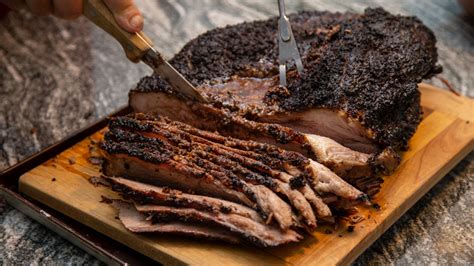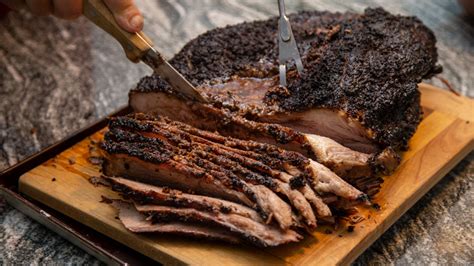
A Colorado homeowner got more than they bargained for after a bobcat wandered into their home and decided to stay, leading to a standoff resolved by wildlife officials.
A Boulder County family experienced a wild encounter last week when a bobcat entered their home and refused to leave, prompting a call to Colorado Parks and Wildlife (CPW). The incident, which occurred in the foothills near Boulder, highlights the increasing interactions between humans and wildlife as development encroaches on natural habitats.
According to CPW spokesperson Jason Clay, the family discovered the bobcat inside their residence and immediately contacted authorities. “The homeowners did the right thing by calling us,” Clay stated. “Trying to handle a wild animal on your own can be dangerous.”
Upon arrival, CPW officers assessed the situation and determined that the bobcat was not immediately posing a threat but was also unwilling to exit the premises. The animal had apparently made itself comfortable, exploring various rooms and exhibiting no signs of aggression, but also no inclination to leave.
“It was just hanging out, seemingly unfazed by the presence of humans,” Clay explained. “Bobcats are typically shy and reclusive animals, so this behavior was a bit unusual.”
The officers initially attempted to coax the bobcat out of the house by opening doors and creating pathways to the outside. However, the bobcat remained inside, prompting the officers to consider other options. After several hours of trying to encourage the bobcat to leave, CPW officials decided to use a tranquilizer dart to safely remove the animal from the home.
“Our priority is always the safety of both the animal and the public,” Clay said. “In this case, tranquilizing the bobcat was the safest and most humane way to resolve the situation.”
Once the bobcat was sedated, the officers carefully moved it to a carrier and transported it to a nearby open space area. There, they released the bobcat back into its natural habitat, away from residential areas.
“We released the bobcat in an area with plenty of natural prey and cover,” Clay stated. “We’re hopeful that it will stay away from human residences in the future.”
The incident serves as a reminder of the importance of securing homes and properties to prevent wildlife from entering. CPW recommends that homeowners take the following precautions:
- Keep doors and windows closed, especially at night.
- Install screens on all windows and doors.
- Seal any cracks or openings in the foundation or exterior walls.
- Clear away brush and vegetation from around the house.
- Do not leave pet food or water outside.
- Secure garbage cans and compost bins.
“By taking these simple steps, homeowners can significantly reduce the risk of attracting wildlife to their property,” Clay said.
The growing number of human-wildlife interactions in Colorado is a concern for CPW. As the state’s population continues to grow, development is encroaching on wildlife habitats, leading to more frequent encounters between humans and animals.
“We’re seeing more and more incidents like this,” Clay stated. “It’s important for people to understand that we share this state with a variety of wild animals, and we need to learn how to coexist safely.”
CPW is working to educate the public about wildlife safety and responsible coexistence. The agency offers a variety of resources, including online guides, workshops, and presentations.
“We want people to appreciate and respect wildlife, but also to be aware of the potential risks,” Clay said. “By working together, we can ensure that both humans and animals can thrive in Colorado.”
The bobcat incident in Boulder County serves as a compelling example of the challenges and complexities of human-wildlife interactions in a rapidly developing state. It underscores the need for proactive measures to prevent such encounters and for responsible strategies to manage them when they occur.
Understanding Bobcats: Biology, Behavior, and Habitat
The bobcat ( Lynx rufus ) is a North American wild cat that is highly adaptable and found in a variety of habitats, ranging from forests and swamps to deserts and urban areas. They are generally smaller than their cousin, the Canadian lynx, and are characterized by their reddish-brown fur, black-spotted coat, and distinctive bobbed tail, from which they get their name.
Bobcats are typically solitary and nocturnal animals, although they may be active during the day, especially in areas with less human disturbance. They are opportunistic hunters, preying on a variety of animals, including rabbits, rodents, birds, and occasionally deer. Their diet can vary depending on the availability of prey in their habitat.
In Colorado, bobcats are found throughout the state, from the high mountains to the eastern plains. They play an important role in the ecosystem by helping to control populations of rodents and other small animals. While bobcats are generally shy and avoid human contact, they can sometimes be attracted to residential areas by food sources, such as pet food or garbage.
Increasing Human-Wildlife Interactions: A Growing Concern
The incident in Boulder County is not an isolated event. Human-wildlife interactions are becoming increasingly common in Colorado and other states as human populations grow and development expands into natural habitats. This can lead to a variety of problems, including property damage, livestock depredation, and even human injuries.
Several factors contribute to the increasing number of human-wildlife interactions:
- Habitat Loss: As humans build homes, businesses, and infrastructure, they destroy and fragment wildlife habitats, forcing animals to seek food and shelter in closer proximity to humans.
- Food Availability: Human activities can inadvertently provide food sources for wildlife, such as unsecured garbage cans, pet food left outdoors, and gardens. This can attract animals to residential areas.
- Climate Change: Changes in climate patterns can affect the distribution and abundance of wildlife populations, leading to increased interactions with humans in some areas.
- Lack of Awareness: Many people are not aware of the risks associated with wildlife encounters or how to prevent them. This can lead to unintentional interactions and conflicts.
Colorado Parks and Wildlife (CPW): Managing Wildlife and Protecting Public Safety
Colorado Parks and Wildlife (CPW) is the state agency responsible for managing wildlife and protecting public safety. CPW has a variety of programs and initiatives aimed at minimizing human-wildlife conflicts, including:
- Education and Outreach: CPW provides information and resources to the public about wildlife safety and responsible coexistence. This includes online guides, workshops, and presentations.
- Habitat Management: CPW works to protect and restore wildlife habitats, ensuring that animals have access to food, water, and shelter.
- Population Management: CPW manages wildlife populations through hunting, trapping, and other methods to prevent overpopulation and reduce conflicts with humans.
- Response to Conflicts: CPW officers respond to reports of human-wildlife conflicts, such as the bobcat incident in Boulder County. They assess the situation and take appropriate action to resolve the conflict safely and humanely.
Living Responsibly with Wildlife: Tips for Homeowners
Homeowners can take several steps to reduce the risk of attracting wildlife to their property and prevent conflicts:
- Secure Food Sources: Store garbage in sealed containers and keep pet food indoors. Clean up any spilled food or crumbs around the yard.
- Remove Attractants: Remove bird feeders, fallen fruit, and other potential food sources. Trim bushes and trees to eliminate hiding places for wildlife.
- Protect Pets: Keep pets indoors, especially at night. If pets are outside, keep them on a leash and supervise them closely.
- Secure Structures: Seal any cracks or openings in the foundation or exterior walls of your home. Install screens on all windows and doors.
- Install Fencing: Install fencing around gardens and other areas to protect them from wildlife.
- Use Motion-Activated Lights: Install motion-activated lights to deter wildlife from approaching your property.
- Be Aware of Your Surroundings: Be aware of the presence of wildlife in your area and take precautions when hiking, camping, or spending time outdoors.
The Role of Public Awareness and Education
Effective management of human-wildlife interactions requires a comprehensive approach that includes public awareness and education. By educating the public about wildlife behavior, habitat requirements, and safety precautions, CPW can help people to coexist safely and responsibly with wildlife.
Educational programs can also help to dispel myths and misconceptions about wildlife, fostering a greater appreciation for the natural world. By promoting a culture of respect for wildlife, CPW can help to ensure that future generations will have the opportunity to enjoy the benefits of living in a state with a rich and diverse wildlife population.
The Boulder County bobcat incident underscores the critical need for continued efforts to educate the public about wildlife safety and responsible coexistence. By working together, humans and wildlife can thrive in Colorado, sharing the landscape and enjoying the benefits of a healthy and balanced ecosystem. This also includes developing better land management strategies that incorporate wildlife corridors and protected habitats to give wildlife a better chance.
Economic Impacts of Wildlife in Colorado
Wildlife contributes significantly to Colorado’s economy through tourism, hunting, fishing, and wildlife viewing. According to a report by CPW, wildlife-related recreation generates billions of dollars in revenue annually, supporting thousands of jobs across the state. The presence of abundant and diverse wildlife populations enhances the quality of life for residents and attracts visitors from around the world.
However, human-wildlife conflicts can also have economic consequences. Property damage caused by wildlife can be costly to repair, and livestock depredation can impact agricultural operations. Implementing preventative measures, such as fencing and habitat management, can help to mitigate these costs.
Legal Considerations and Regulations
Colorado has laws and regulations in place to protect both wildlife and the public. These laws govern hunting, fishing, trapping, and other activities that involve wildlife. It is illegal to harass, harm, or kill certain species of wildlife without a permit. Violations of these laws can result in fines, imprisonment, and other penalties.
CPW officers are responsible for enforcing wildlife laws and regulations. They conduct patrols, investigate violations, and work to educate the public about the importance of compliance. It is important for people to be aware of the laws and regulations that apply to wildlife in their area and to report any violations to CPW.
Long-Term Strategies for Coexistence
Managing human-wildlife interactions is an ongoing challenge that requires long-term strategies and collaboration among various stakeholders. These strategies should focus on:
- Habitat Conservation: Protecting and restoring wildlife habitats is essential for ensuring that animals have access to food, water, and shelter. This includes conserving open spaces, managing forests sustainably, and restoring degraded habitats.
- Land Use Planning: Incorporating wildlife considerations into land use planning decisions can help to minimize the impacts of development on wildlife habitats. This includes creating wildlife corridors, setting aside buffer zones, and implementing building restrictions in sensitive areas.
- Public Education: Continuing to educate the public about wildlife safety and responsible coexistence is crucial for fostering a culture of respect for wildlife. This includes providing information about wildlife behavior, habitat requirements, and safety precautions.
- Adaptive Management: Implementing adaptive management strategies that allow for flexibility and adjustments based on new information and changing conditions is essential for effectively managing human-wildlife interactions. This includes monitoring wildlife populations, evaluating the effectiveness of management strategies, and adapting as needed.
Community Involvement and Collaboration
Effective management of human-wildlife interactions requires community involvement and collaboration among various stakeholders, including homeowners, landowners, businesses, government agencies, and conservation organizations. By working together, these stakeholders can develop and implement solutions that meet the needs of both humans and wildlife.
Community-based initiatives, such as neighborhood watch programs and volunteer habitat restoration projects, can help to foster a sense of stewardship for wildlife and promote responsible coexistence. These initiatives can also provide opportunities for people to learn more about wildlife and to get involved in conservation efforts.
Future Challenges and Opportunities
The challenges of managing human-wildlife interactions are likely to increase in the future as Colorado’s population continues to grow and development expands into natural habitats. Climate change, invasive species, and other environmental factors may also exacerbate these challenges.
However, there are also opportunities to improve the way humans and wildlife coexist. Advances in technology, such as GPS tracking and remote sensing, can provide valuable information about wildlife populations and movements. Innovative management strategies, such as using drones to monitor wildlife and deploying non-lethal deterrents, can help to minimize conflicts.
By embracing these challenges and opportunities, Colorado can continue to be a leader in wildlife conservation and responsible coexistence. By working together, we can ensure that future generations will have the opportunity to enjoy the benefits of living in a state with a rich and diverse wildlife population.
FAQ: Bobcat Encounter in Colorado Home
-
Q1: What should I do if I find a bobcat in my home?
- A: The most important thing is to remain calm and avoid approaching or cornering the animal. Contact Colorado Parks and Wildlife (CPW) immediately for assistance. Do not attempt to handle the bobcat yourself, as this could be dangerous. CPW will assess the situation and determine the best course of action to safely remove the animal. “The homeowners did the right thing by calling us,” Clay stated. “Trying to handle a wild animal on your own can be dangerous.”
-
Q2: How can I prevent bobcats from entering my home?
- A: To prevent bobcats from entering your home, take the following precautions: Keep doors and windows closed, especially at night. Install screens on all windows and doors. Seal any cracks or openings in the foundation or exterior walls. Clear away brush and vegetation from around the house. Do not leave pet food or water outside. Secure garbage cans and compost bins. “By taking these simple steps, homeowners can significantly reduce the risk of attracting wildlife to their property,” Clay said.
-
Q3: Are bobcats dangerous to humans?
- A: Bobcats are generally shy and reclusive animals that avoid human contact. However, they are wild animals and can be unpredictable. It is important to maintain a safe distance and avoid approaching or feeding them. If you feel threatened by a bobcat, make yourself look large, make noise, and slowly back away.
-
Q4: What does Colorado Parks and Wildlife (CPW) do when they receive a report of a bobcat in a residential area?
- A: CPW officers will assess the situation and determine the appropriate course of action. This may involve attempting to coax the bobcat out of the area, capturing and relocating the animal, or, in rare cases, euthanizing it if it poses a significant threat to public safety. In the Boulder County incident, officers initially tried to coax the bobcat out before resorting to a tranquilizer dart. “Our priority is always the safety of both the animal and the public,” Clay said. “In this case, tranquilizing the bobcat was the safest and most humane way to resolve the situation.”
-
Q5: What are the penalties for harming or killing a bobcat in Colorado?
- A: It is illegal to harass, harm, or kill a bobcat in Colorado without a proper license or permit. Violations of these laws can result in fines, imprisonment, and other penalties. Contact CPW for information on hunting regulations and licensing requirements.









